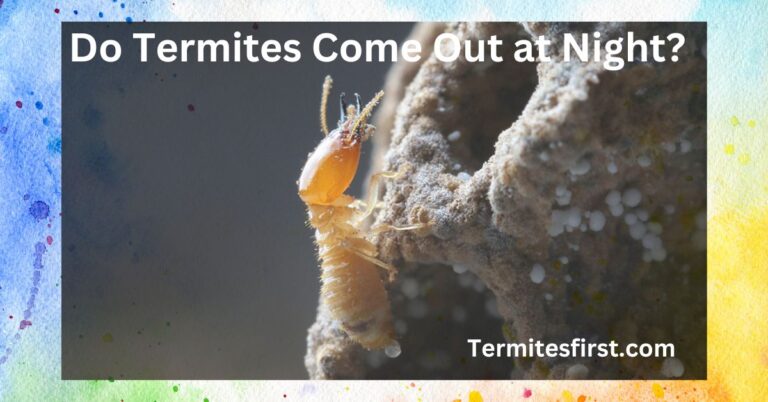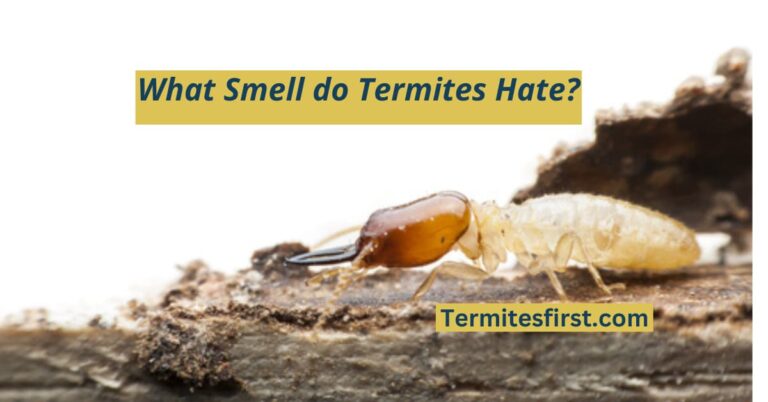Are Termites Attracted to Light?
I often wonder if termites are attracted to light. It’s a common belief that these pests are drawn to bright spots, but is it true? Understanding their behavior can help me protect my home from potential infestations. Termites typically thrive in dark, damp environments, making them less likely to be found near lights. However, certain species may venture out when they sense warmth or moisture. This knowledge gives me an edge in pest control. By knowing what attracts termites, I can take proactive steps to keep them at bay and safeguard my living space. Let’s dive deeper into this topic and explore the fascinating world of termites and their relationship with light.
Key Takeaways
- Termite alates, or winged termites, are primarily attracted to light during their swarming season, which is essential for their reproduction.
- Understanding the swarming behavior of alates can help you identify when and where they are likely to appear, allowing for better management.
- While termites are drawn to light, they are more often attracted to moisture and wood sources, so inspect your home for these conditions.
- To manage alate infestations, consider reducing outdoor lighting near your home and sealing entry points to prevent flying termites from entering.
- Regularly check for signs of termite activity, such as discarded wings or mud tubes, especially after swarming events.
- Educate yourself about termite behavior and prevention strategies to protect your home from potential infestations.
Understanding Termite Alates
What Are Termite Alates
Alates are the winged reproductive termites. They emerge during specific seasons, often in large swarms. Their main role is to establish new colonies. After mating, they will land and shed their wings. This marks the beginning of a new colony.
Alates hold significance in the termite life cycle. They ensure the survival and spread of their species. Without them, colonies would not expand or thrive. I find it fascinating how these small creatures, like termites, play such a vital role in nature.
Appearance and Traits
Alates have distinct physical characteristics. They possess long, narrow wings that are equal in size. Their bodies are usually dark brown or black. Unlike other termite castes, alates have larger eyes and a more elongated shape.
Identifying alates can be straightforward if you know what to look for. Other termite castes, like workers and soldiers, lack wings and have different body shapes. Alates also have straight antennae, unlike other castes that have elbowed ones. These traits help in quickly diagnosing a termite problem when spotted.
Role in Life Cycle
Alates contribute significantly to the reproduction process. After mating, they become king and queen termites. This transition is crucial for establishing new colonies. The queen lays eggs, which develop into various castes.
The importance of alates in colony expansion cannot be overstated. They are responsible for creating new colonies that can lead to termite issues if left unchecked. I remember learning about this during my own termite inspection, where I saw how quickly they could multiply.
Swarming Behavior of Alates
Timing of Swarming
Weather conditions play a vital role in the swarming of alates. Warm temperatures and high humidity often trigger these events. Typically, swarming occurs after rainfall. This moisture helps soften the ground, making it easier for alates to emerge.
Seasonally, most termite species swarm during spring or early summer. For example, some species may swarm as early as April, while others wait until June. I remember observing this phenomenon one evening in May. The air was warm, and a recent rain had just fallen.
Swarming usually happens at dusk or dawn. During these times, light levels are low but still visible. This timing helps protect alates from predators while they search for mates.
Reasons for Swarming
Swarming behavior offers several evolutionary advantages. It allows termites to find new territories for colonization. By dispersing, they reduce competition for resources within their original colony.
Genetic diversity is crucial for the health of termite populations. Swarming enables different colonies to mix their genetic material. This process strengthens the overall population by enhancing adaptability to environmental changes.
Environmental factors also influence swarming events. Changes in temperature and humidity can trigger a swarm. I have noticed that certain weather patterns seem to lead to increased alate activity around my home. After heavy rains, I often see them flying around lights outside.
Impact on Environment
Termites play a significant ecological role in their habitats. They help decompose dead plant material and recycle nutrients back into the soil. As termites consume wood and other organic matter, they break it down into smaller particles.
Alates contribute to soil health through their droppings, which enrich the soil with nutrients. Their activities promote nutrient cycling, benefiting plants and other organisms in the ecosystem.
However, overpopulation can lead to negative consequences. An excessive number of termites can damage wooden structures and crops. In extreme cases, this may result in economic losses for farmers and homeowners.
Attraction to Light

Scientific Explanation
Termites exhibit a strong attraction to light during their swarming phase. This behavior is mainly due to their biological mechanisms. Alates, or winged termites, possess specialized eyes that can detect light. These adaptations help them navigate effectively.
Light plays a crucial role in guiding alates. During swarming, they use light as a reference point for orientation. I find it fascinating how these tiny creatures rely on such simple cues for complex behaviors. Their attraction to light helps them locate suitable mates and new habitats.
Observations and Studies
Research has shown significant findings regarding termite swarming behavior. Notable studies indicate that alates are more likely to swarm on warm evenings with clear skies. For instance, a 2017 study published in the journal “Insect Behavior” examined the correlation between weather conditions and termite activity. The results highlighted that swarming peaks occur shortly after sunset.
These studies have implications for pest management strategies. Understanding when and why termites swarm can help control their populations. I believe knowing this information can aid homeowners in taking preventive measures against infestations.
Light Sources and Behavior
Common sources of light attract alates. Streetlights, porch lights, and other artificial illuminations often draw these insects. Alates show a strong behavioral response to these lights. They tend to fly towards them, sometimes in large numbers.
Light pollution significantly affects termite swarming patterns. Bright urban areas may disrupt their natural navigation methods. This can lead to increased swarming events in unexpected locations. I have observed this phenomenon myself in my neighborhood; the streetlights seem to create a constant buzz of activity during certain times of the year.
Managing Alate Infestations
Prevention Methods
Homeowners can take several steps to reduce the attraction of alates to light. First, I suggest minimizing outdoor lighting during swarming seasons. Using yellow or sodium vapor bulbs can be less attractive to termites.
Landscaping strategies also play a role. Keeping plants and mulch away from the home reduces the chance of attracting these insects. It’s helpful to maintain a clear area around the foundation, as this discourages alate presence.
Screens and barriers are effective tools for keeping alates out. Installing screens on windows and doors prevents them from entering homes. Sealing cracks and gaps in walls can further limit their access.
Control Techniques
Controlling termite populations requires various methods. Chemical options include insecticides that target both alates and established colonies. These products can be effective but must be applied carefully according to instructions.
Non-chemical options exist as well. Baiting systems attract termites and eliminate them over time. I have seen homeowners use these systems successfully, which helps manage swarms without harsh chemicals.
Evaluating the effectiveness of different control strategies is crucial. Chemical treatments offer immediate results but may require reapplication. Non-chemical methods often take longer but can provide lasting solutions with less environmental impact.
Professional Assistance
Seeking expert help for termite infestations is essential. Pest control professionals have the training and experience needed for effective management. They can quickly assess the situation and recommend appropriate actions.
Hiring professionals has many benefits. They often use advanced technology and techniques that homeowners may not have access to. Regular inspections by experts help identify potential problems before they escalate.
I believe that investing in regular inspections is a smart move for any homeowner. It not only prevents infestations but also provides peace of mind knowing your home is protected.
Conclusion:
I’ve explored how termite alates behave and their attraction to light. Understanding this can help me manage infestations effectively. Recognizing the swarming patterns of these pests is crucial for prevention.
If I notice signs of termites, I must act quickly. Taking proactive steps can save my home from costly damage. Stay informed and vigilant. Don’t let termites take over; protect your space today!
FAQ’s:-
Yes, termites, particularly alates (winged reproductive termites), are attracted to light. This behavior helps them find mates during their swarming season.
Termite alates are the winged reproductive members of a termite colony. They leave the nest to mate and establish new colonies, usually during warm, humid conditions.
Termite alates typically swarm in the spring or early summer when temperatures rise and moisture levels increase. This timing varies by region and species.
To manage alate infestations, eliminate potential nesting sites, reduce moisture around your home, and use insecticides or consult pest control professionals for effective treatment options.
Not all termites swarm at night; some species may swarm during the day. However, many prefer dusk or nighttime due to lower competition from predators.
While you can’t completely prevent swarming, you can reduce risks by maintaining your property, sealing cracks, and eliminating wood-to-soil contact to deter termite activity.
If you see swarming termites indoors, it’s crucial to act quickly. Contact a pest control expert immediately to assess the situation and recommend appropriate treatments.








One Comment